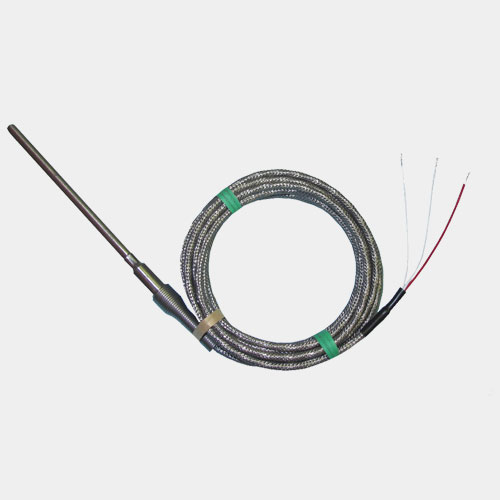
Product Details:-
Resistance thermometers, also called resistance temperature detectors (RTDs), are sensors used to measure temperature.
Many RTD elements consist of a length of fine wire wrapped around a ceramic or glass core but other constructions are also used.
The RTD wire is a pure material, typically platinum, nickel, or copper. The material has an accurate resistance/temperature relationship which is used to provide an indication of temperature.
As RTD elements are fragile, they are often housed in protective probes
The principle of operation is to measure the resistance of a platinum element. The most common type (PT100) has a resistance of 100 ohms at 0 °C and 138.4 ohms at 100 °C.
There are also PT1000 sensors that have a resistance of 1000 ohms at 0 °C.
The relationship between temperature and resistance is approximately linear over a small temperature range: for example, if you assume that it is linear over the 0 to 100 °C range, the error at 50 °C is 0.4 °C. For precision measurement, it is necessary to linearise the resistance to give an accurate temperature.
The most recent definition of the relationship between resistance and temperature is International Temperature Standard 90 (ITS-90).
Address: F-56, 1st Floor, Sector-9, Noida-201301, Uttar Pradesh, India
Fax Number: 0120-4133122
Phone: +91-9811177481
Phone: +91-9811106666
Email: info@ecthermo.com